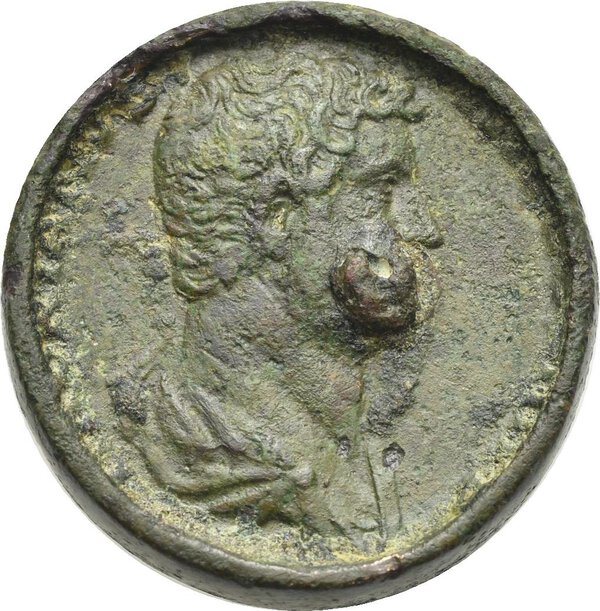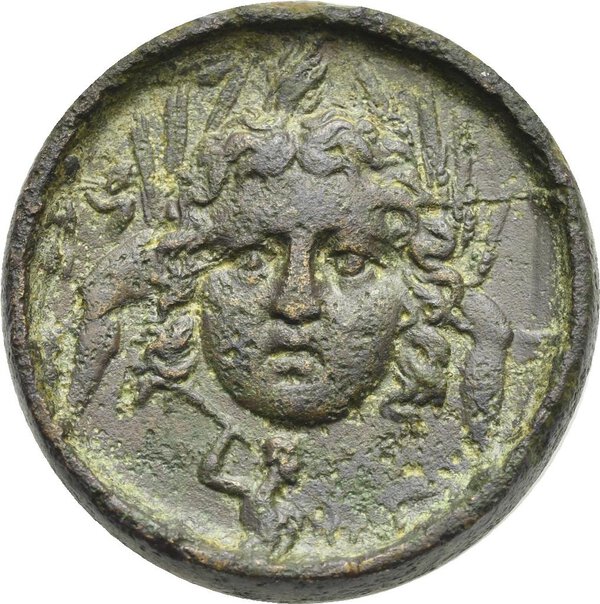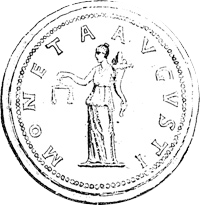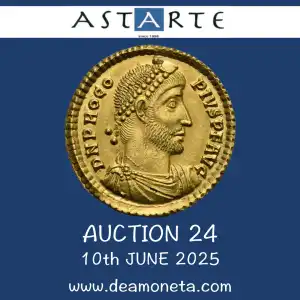





Hadrian, 117-138. "Proto-Contorniate" Medallic Sestertius. Rome. AD 130-138 (Bronze, 28.44 mm, 19.08 g). HADRIANVS - [AVG COS] III [P P], Bareheaded and draped bust right. Rev. [SICILIA], Charybdis represented as a triskeles and a Medusa-like face, with ears of wheat among the hair instead of snakes; below is the monster Scylla wielding what is probably the rudder; on the left, above the leg of the triskeles, a musician playing the aulos is visible, facing left (a detail never noticed before); the rest of the elements described by previous numismatists, namely a temple on hill on the left and a lighthouse (also interpreted as a helmet and standing figure) on the right, are not visible due to the hammered edge. RIC II.3 2896. Cohen 1141 (250 Francs). Banti -. Gnecchi III, p. 19, n. 87, pl. 145, n. 10 (only one specimen). Untouched green patina, with a red cuprite crystal on the emperor's lips. Small die break on the reverse, which probably caused the coin to be minted in a very limited number of specimens. Almost unattainably Rare: the third recorded specimen, with the other two held in institutional collections. Despite the hammered edge, it represents the finest example among all in terms of preservation.
Once his power was sufficiently consolidated, Hadrian undertook a series of travels throughout the Empire (Gaul, Germany, Britain, Spain, Mauretania) to personally assess the needs and take the necessary measures to make the defensive system efficient. In 128, he inspected the province of Africa, and probably during this visit, he had the opportunity to tour Sicily. If we are to judge by the reverse of this Medallic Sestertius to understand the outcome of his Sicilian stay, we can confidently say it was extraordinary—both a mystical and archaic experience, much like it still is today. The obverse portrait features an extremely detailed representation of the hair, unlike the usual bareheaded portrait seen on Hadrian's coins. The curls above the forehead undoubtedly reflect the sublime style of the engraver known as the 'Alphaeus Master.'
The edge of the coin has been subtly worked to create a raised rim, a characteristic sometimes associated with Proto-Contorniates. This Medallic Sestertius has lived more than one life. At some point—though perhaps not for the last time—it may have been repurposed as a presentation piece, possibly set into a phalera for display.


